Are you eagerly anticipating a trip to Scotland? You’re not alone! As travel restrictions begin to ease globally, SIXT.VN is here to provide you with the latest updates on when Scotland will open for tourism. We’ll explore the current situation, potential reopening dates, and what you can expect when you finally visit. Discover the enchanting landscapes and vibrant culture of Scotland with confidence, knowing that SIXT.VN is your trusted travel partner for a seamless journey. Start planning your Scottish adventure today, and let us help you make it unforgettable with convenient services like airport transfers and curated tour recommendations.
1. What is the Current Status of Tourism in Scotland?
The tourism sector in Scotland is gradually reopening. While restrictions have eased significantly, it’s essential to stay updated on the latest guidelines from the Scottish government.
Scotland has been progressively easing its COVID-19 restrictions, impacting the tourism industry positively. According to VisitScotland, the national tourism organization, Scotland is welcoming visitors but emphasizes responsible tourism practices. This means respecting local communities, adhering to health and safety guidelines, and protecting the environment.
2. When Can We Expect Scotland to Fully Open for Tourism?
A precise date for a complete reopening is hard to pinpoint, but current trends suggest a continued easing of restrictions throughout the year.
While there isn’t a fixed date for a complete reopening, the trend suggests a gradual return to normalcy. According to research from the Scottish Tourism Alliance in 2023, the tourism sector is projected to see a significant recovery, contingent upon the continued relaxation of travel restrictions and successful vaccination programs. Keep an eye on official announcements from the Scottish government and VisitScotland for the most up-to-date information.
3. What Travel Restrictions Are Currently in Place in Scotland?
Travelers should be aware of any remaining COVID-19 related restrictions, which might include vaccination requirements or testing protocols.
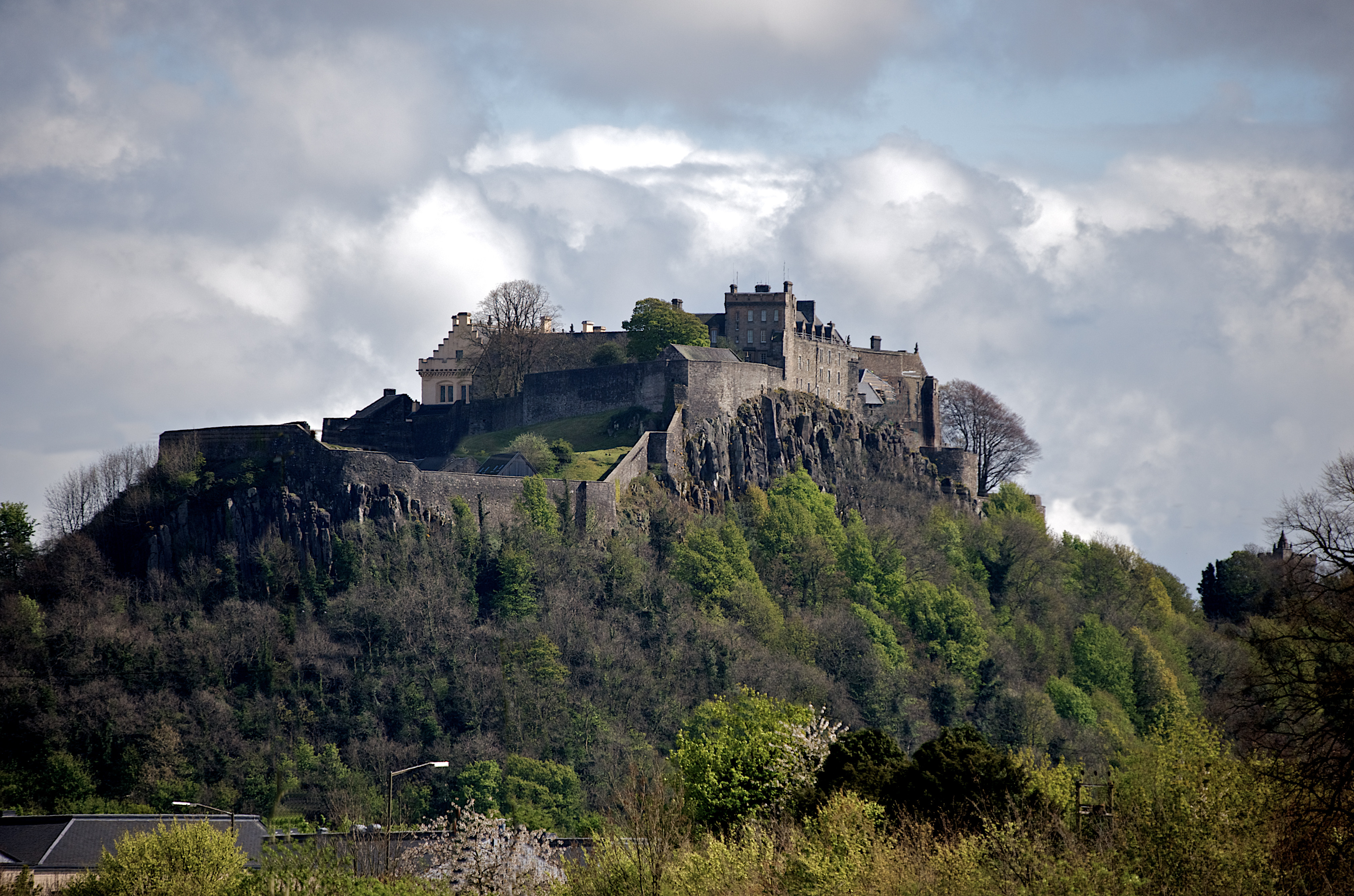 General view of Stirling Castle.
General view of Stirling Castle.
As of late 2024, many of the stringent COVID-19 restrictions have been lifted. However, it’s crucial to check the latest travel advice before your trip. Some restrictions that might still be in place include:
- Vaccination Requirements: Proof of vaccination may be required for entry into certain venues or events.
- Testing Protocols: Depending on your country of origin, you might need to take a COVID-19 test before or after arrival.
- Mask Mandates: Masks may still be required in certain indoor settings, such as public transportation or healthcare facilities.
- Social Distancing: While not strictly enforced, maintaining social distancing is encouraged in crowded areas.
4. What Measures Are Being Taken to Ensure Tourist Safety in Scotland?
Scotland is committed to ensuring the safety of both visitors and residents through enhanced hygiene protocols and safety measures.
Scotland is taking significant steps to ensure tourist safety. VisitScotland has launched the “We’re Good to Go” scheme, which provides a benchmark for tourism businesses to demonstrate that they are adhering to government and public health guidance. Key measures include:
- Enhanced Cleaning Protocols: Hotels, restaurants, and attractions have implemented rigorous cleaning and sanitization procedures.
- Contactless Services: Many businesses offer contactless payment options and online booking systems to minimize physical interaction.
- Capacity Management: Venues are managing capacity to ensure social distancing and prevent overcrowding.
- Health Monitoring: Staff are trained to monitor their health and are encouraged to stay home if they feel unwell.
5. What Attractions and Activities Are Currently Open in Scotland?
Many of Scotland’s iconic attractions, including castles, museums, and natural landmarks, are now open to visitors.
Scotland boasts a wealth of attractions and activities, many of which are now open. Here are some highlights:
- Historical Sites: Explore iconic castles like Edinburgh Castle and Stirling Castle, steeped in history and offering breathtaking views.
- Museums and Galleries: Immerse yourself in Scottish culture at the National Museum of Scotland or the Scottish National Gallery.
- Outdoor Adventures: Hike through the stunning landscapes of the Scottish Highlands, visit Loch Ness, or explore the Isle of Skye.
- Whisky Distilleries: Take a tour of a traditional whisky distillery and sample Scotland’s famous spirit.
- Cultural Events: Check out local festivals, music performances, and traditional Highland games.
6. How Can I Plan a Trip to Scotland with Confidence?
Planning your trip with reliable resources and flexible booking options will give you peace of mind.
To plan your trip to Scotland with confidence, consider the following tips:
- Stay Informed: Keep up to date with the latest travel advice and restrictions from official sources like VisitScotland and the Scottish government.
- Book in Advance: Reserve accommodations, tours, and attractions in advance to secure your spot and take advantage of early bird deals.
- Choose Flexible Options: Opt for bookings with flexible cancellation policies in case your plans change due to unforeseen circumstances.
- Travel Insurance: Purchase comprehensive travel insurance that covers medical emergencies, trip cancellations, and other potential issues.
- Use Reputable Services: Rely on trusted travel providers like SIXT.VN for airport transfers, hotel bookings, and curated tour recommendations.
7. What Are Some of the Best Places to Visit in Scotland?
Scotland offers a diverse range of destinations, from vibrant cities to stunning natural landscapes.
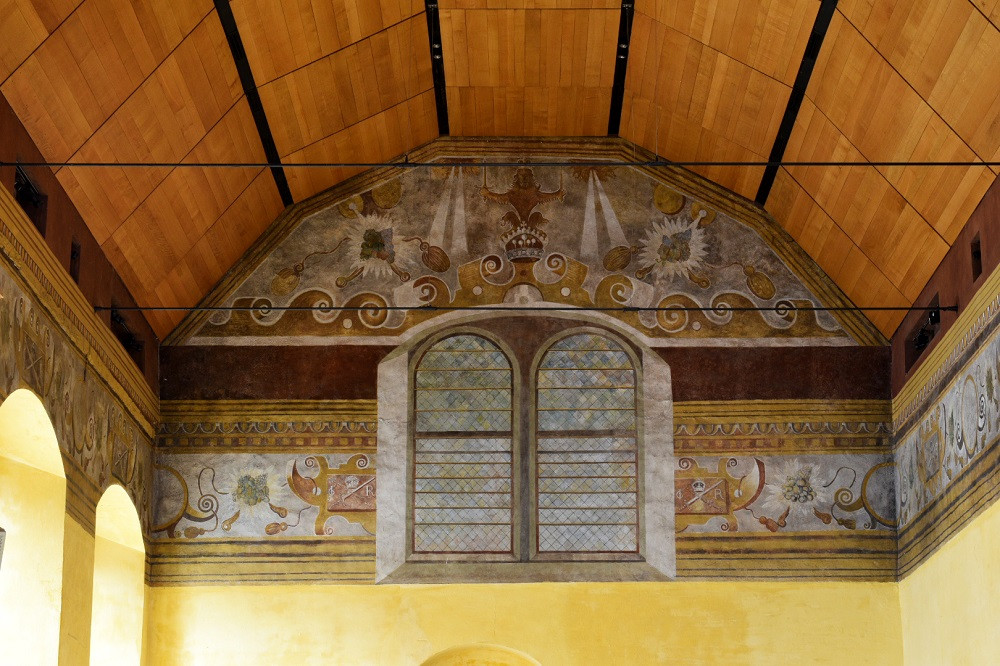 The upper part of a tall room, with large, arched windows. The top of th walls are painted with a mural featuring windows, waves and other designs. The ceiling is arched and clad in wood. The ceiling is arched and clad in wood.
The upper part of a tall room, with large, arched windows. The top of th walls are painted with a mural featuring windows, waves and other designs. The ceiling is arched and clad in wood. The ceiling is arched and clad in wood.
Scotland is packed with incredible destinations. Here are a few must-visit places:
- Edinburgh: Scotland’s capital city is a UNESCO World Heritage Site, boasting historic architecture, vibrant culture, and iconic landmarks.
- Glasgow: Known for its music scene, Victorian architecture, and friendly atmosphere, Glasgow is a must-see city.
- Scottish Highlands: Explore the rugged beauty of the Highlands, with its towering mountains, serene lochs, and charming villages.
- Isle of Skye: Famous for its dramatic landscapes and unique rock formations, the Isle of Skye is a photographer’s paradise.
- Loch Ness: Search for the legendary Loch Ness Monster while enjoying the stunning scenery surrounding this famous loch.
8. What Types of Accommodation Are Available in Scotland?
Scotland offers a wide range of accommodation options to suit every traveler’s needs and budget.
Scotland offers a variety of accommodation options:
- Hotels: From luxury hotels to budget-friendly options, you’ll find a wide range of hotels in cities and towns throughout Scotland.
- Bed and Breakfasts: Enjoy a cozy and personalized experience at a charming bed and breakfast.
- Self-Catering Apartments: Opt for a self-catering apartment for more space and flexibility, perfect for families or groups.
- Hostels: Budget-conscious travelers can find affordable accommodation in hostels.
- Camping: Immerse yourself in nature by camping in one of Scotland’s beautiful campsites.
9. What Transportation Options Are Available for Getting Around Scotland?
Scotland has a well-developed transportation network, making it easy to explore the country.
Getting around Scotland is convenient with these options:
- Car Rental: Renting a car gives you the freedom to explore at your own pace, especially in the Scottish Highlands and Isle of Skye.
- Public Transportation: Scotland has a reliable public transportation system, including trains and buses, connecting major cities and towns.
- Tours: Consider joining a guided tour for a hassle-free way to see the sights and learn about Scotland’s history and culture.
- Taxis and Ride-Sharing Services: Taxis and ride-sharing services are available in urban areas.
- Ferry: Use ferries to reach the various islands around Scotland.
10. How Can SIXT.VN Enhance My Trip to Scotland?
SIXT.VN offers a range of services to make your trip to Scotland seamless and enjoyable.
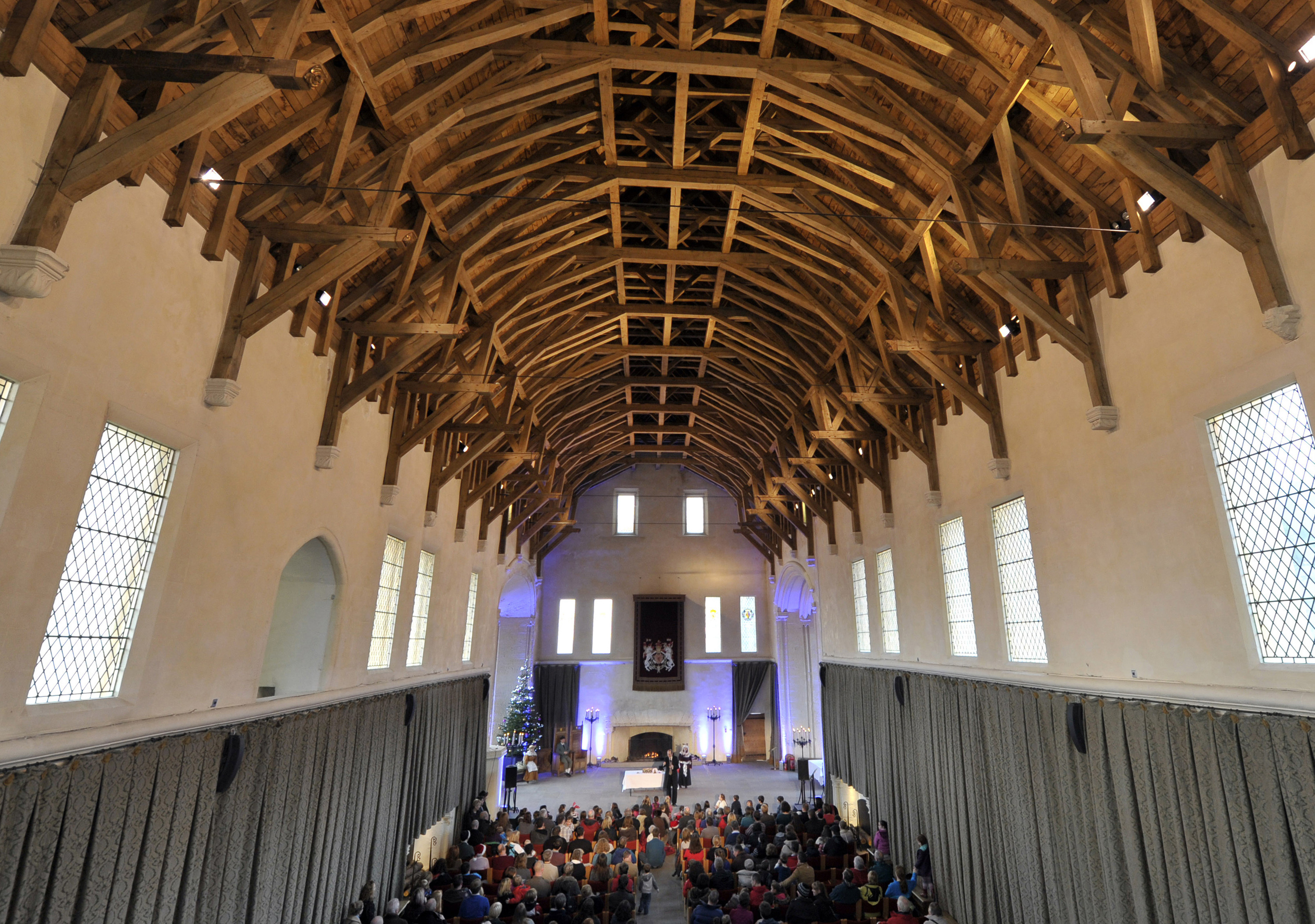 The Great Hall at Stirling Castle with full audience seated
The Great Hall at Stirling Castle with full audience seated
SIXT.VN is your trusted travel partner for exploring Scotland. We offer:
- Airport Transfers: Start your trip stress-free with our reliable airport transfer services.
- Hotel Bookings: Choose from a wide selection of hotels to suit your budget and preferences.
- Curated Tour Recommendations: Discover the best of Scotland with our carefully selected tour options.
11. What Should I Pack for a Trip to Scotland?
Packing appropriately for Scotland’s variable weather is essential for a comfortable trip.
Packing for Scotland requires consideration of its unpredictable weather. Here’s a checklist:
- Waterproof Jacket: Essential for staying dry in Scotland’s rainy climate.
- Layers: Pack clothing that can be layered, such as sweaters, fleeces, and thermal base layers.
- Comfortable Shoes: Wear comfortable walking shoes for exploring cities, castles, and natural landscapes.
- Warm Hat and Gloves: Even in summer, the weather can be cool, especially in the Highlands.
- Scarf: A scarf can provide extra warmth and protection from the wind.
- Umbrella: Although a waterproof jacket is essential, an umbrella can also be handy for quick showers.
- Sunscreen: Surprisingly, the sun can be strong in Scotland, especially during the summer months.
- Insect Repellent: Protect yourself from midges, especially if you plan to spend time in the Highlands.
12. What Are Some Cultural Considerations to Keep in Mind When Visiting Scotland?
Respecting local customs and traditions will enhance your experience and ensure a warm welcome.
When visiting Scotland, keep these cultural considerations in mind:
- Politeness: Scots are generally polite and appreciate good manners.
- Tipping: Tipping is customary in restaurants, bars, and for taxi services.
- Respect for History and Culture: Show respect for Scotland’s rich history and cultural heritage.
- Language: While English is widely spoken, learning a few basic Gaelic phrases can be a nice gesture.
- Local Customs: Be aware of local customs and traditions, especially during festivals and events.
13. What Types of Food and Drink Should I Try in Scotland?
Sampling traditional Scottish cuisine is a must for any visitor.
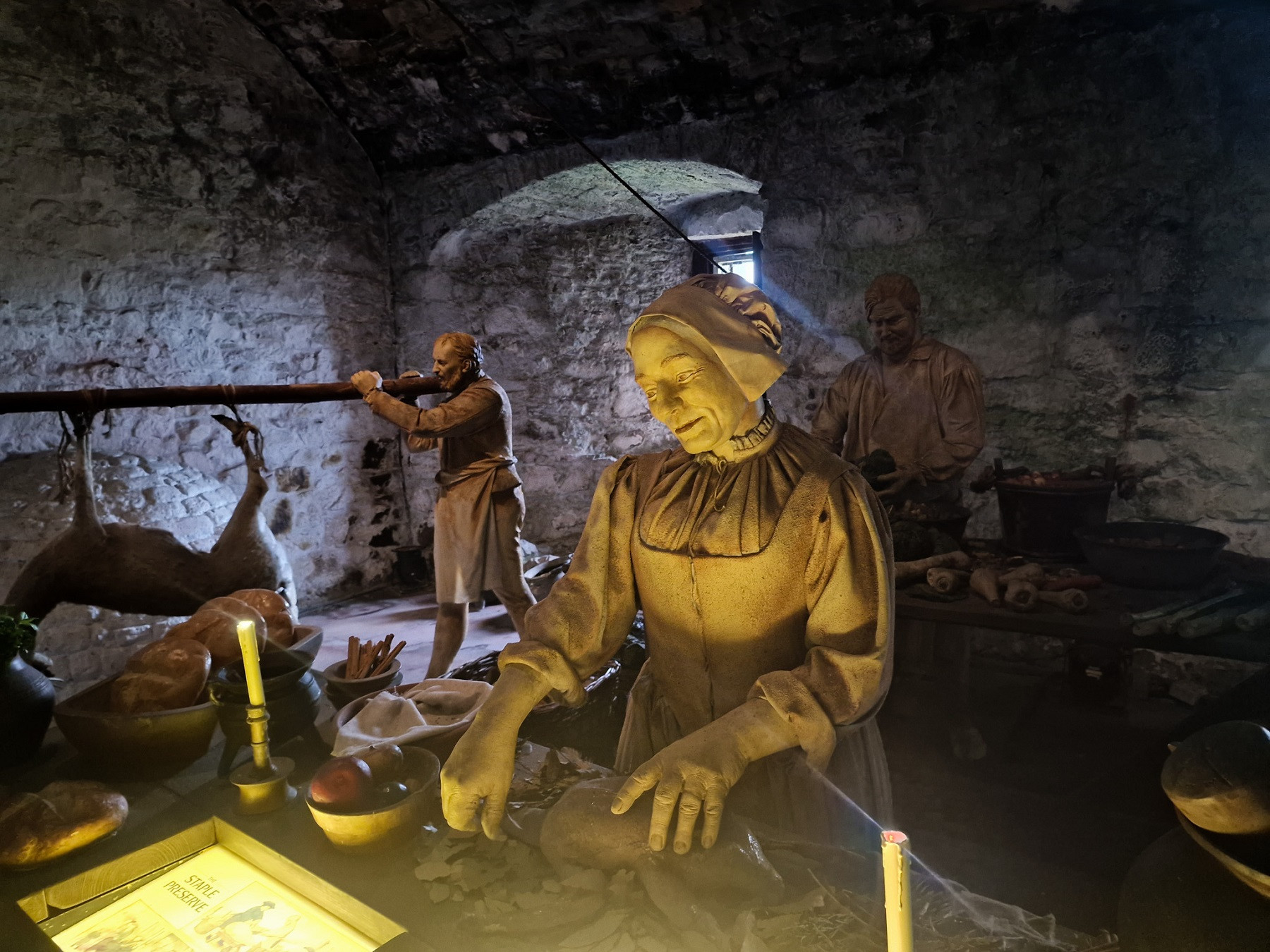 Tables in the stone kitchen, with apples, bread and other foodstuffs on them. Wax models stand behind the tables, preparing food. One model is roasting a deer on a spit.
Tables in the stone kitchen, with apples, bread and other foodstuffs on them. Wax models stand behind the tables, preparing food. One model is roasting a deer on a spit.
Don’t miss these iconic Scottish foods and drinks:
- Haggis: Scotland’s national dish, made from sheep’s pluck, oats, and spices.
- Scottish Salmon: Enjoy fresh and delicious Scottish salmon, known for its high quality.
- Whisky: Sample Scotland’s famous whisky at a local distillery or pub.
- Irn-Bru: Try Scotland’s iconic fizzy drink, often described as “Scotland’s other national drink.”
- Shortbread: Indulge in buttery and crumbly Scottish shortbread.
- Cullen Skink: A hearty soup made from smoked haddock, potatoes, and onions.
14. What Are Some Popular Events and Festivals in Scotland?
Scotland hosts a variety of exciting events and festivals throughout the year.
Experience Scotland’s vibrant culture at these popular events:
- Edinburgh Fringe Festival: The world’s largest arts festival, featuring theater, comedy, music, and more.
- Highland Games: Traditional Scottish sporting events, showcasing Highland dancing, bagpipe music, and athletic competitions.
- Celtic Connections: A celebration of Celtic music and culture, held in Glasgow each January.
- Burns Night: Celebrated on January 25th, commemorating the life and works of Scottish poet Robert Burns.
- Hogmanay: Scotland’s New Year celebration, featuring street parties, fireworks, and traditional music.
15. How Can I Ensure a Sustainable and Responsible Trip to Scotland?
Traveling responsibly helps preserve Scotland’s natural beauty and support local communities.
To ensure a sustainable trip to Scotland:
- Respect the Environment: Follow Leave No Trace principles and avoid littering.
- Support Local Businesses: Shop at local stores, eat at local restaurants, and stay in locally owned accommodations.
- Use Public Transportation: Reduce your carbon footprint by using public transportation whenever possible.
- Conserve Resources: Be mindful of your water and energy consumption.
- Respect Wildlife: Observe wildlife from a distance and avoid disturbing their natural habitats.
16. What Are Some Lesser-Known Gems to Discover in Scotland?
Venture off the beaten path to discover Scotland’s hidden treasures.
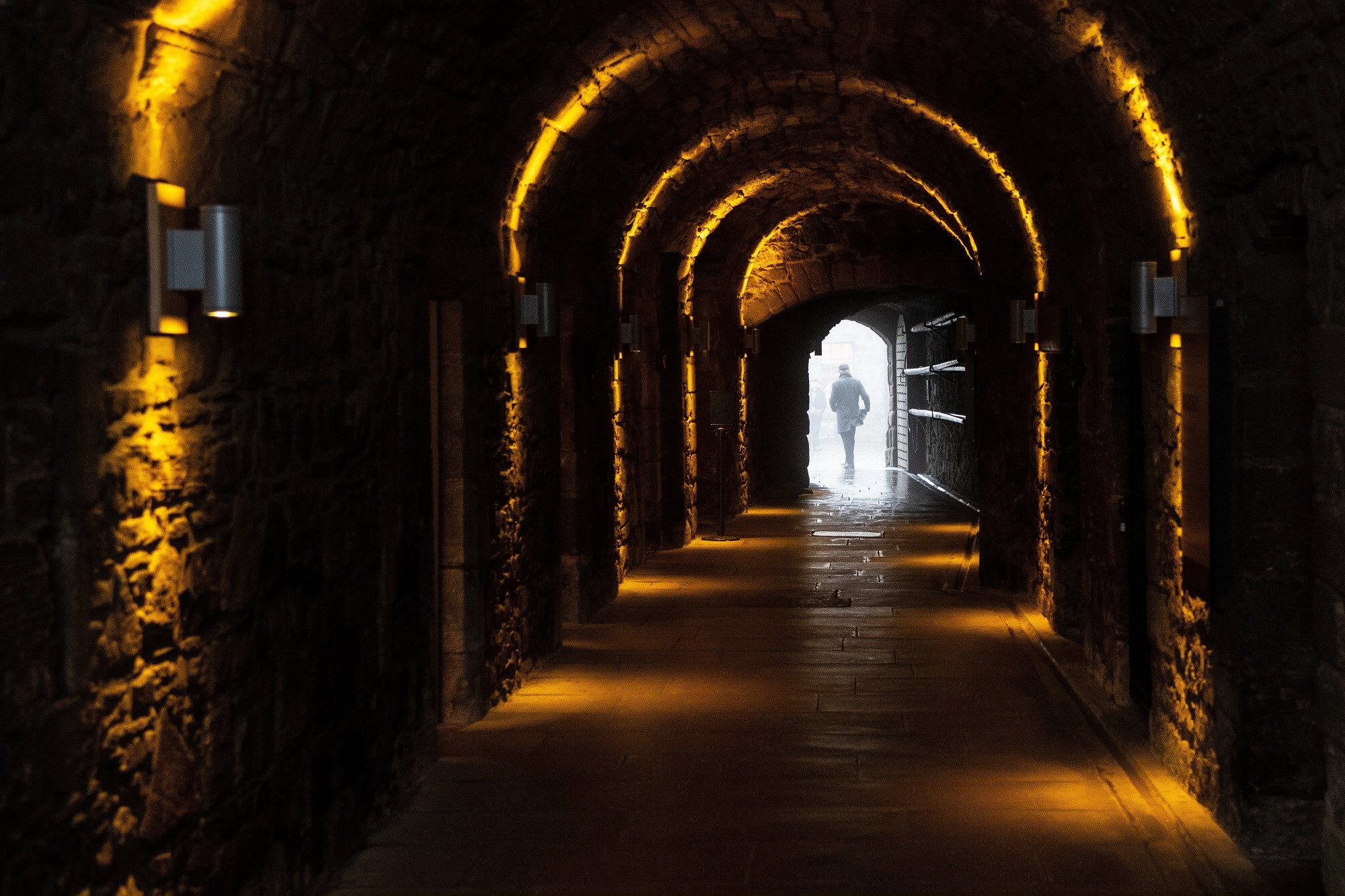 The Palace Vault
The Palace Vault
Explore these hidden gems in Scotland:
- Eilean Donan Castle: A picturesque castle located on a small island, offering stunning views and a rich history.
- Fairy Pools, Isle of Skye: Crystal-clear pools and waterfalls, perfect for a refreshing swim.
- Cairngorms National Park: A vast wilderness area, offering hiking, skiing, and wildlife watching opportunities.
- Shetland Islands: Remote islands with stunning coastal scenery, unique wildlife, and a rich Viking heritage.
- Isle of Mull: Home to colorful fishing villages, ancient castles, and diverse wildlife.
17. What Are Some Family-Friendly Activities to Enjoy in Scotland?
Scotland offers a range of activities that are fun for the whole family.
Enjoy these family-friendly activities in Scotland:
- Edinburgh Zoo: See a wide variety of animals, including pandas, penguins, and tigers.
- Dynamic Earth, Edinburgh: An interactive science museum, exploring the wonders of the natural world.
- Landmark Forest Adventure Park, Carrbridge: A fun-filled adventure park, featuring tree-top trails, rollercoasters, and a dinosaur kingdom.
- Deep Sea World, North Queensferry: An underwater aquarium, showcasing a variety of marine life.
- Glasgow Science Centre: An interactive science museum, with exhibits and activities for all ages.
18. What Should I Know About Scotland’s Currency and Payment Methods?
Being prepared with the right currency and payment options will make your trip smoother.
Here’s what you need to know about currency and payment methods in Scotland:
- Currency: The official currency of Scotland is the British pound sterling (GBP).
- Payment Methods: Credit and debit cards are widely accepted in Scotland, especially in urban areas.
- Cash: It’s a good idea to carry some cash for smaller establishments and rural areas.
- ATMs: ATMs are readily available in cities and towns throughout Scotland.
- Exchange Rates: Check the current exchange rates before your trip to get the best value for your money.
19. What Are Some Useful Apps to Download Before Visiting Scotland?
Downloading these apps can enhance your travel experience in Scotland.
These apps can be helpful during your trip to Scotland:
- Citymapper: Plan your routes on public transportation in cities like Edinburgh and Glasgow.
- VisitScotland: Official app with information on attractions, events, and accommodation.
- Met Office Weather: Stay up-to-date on the latest weather forecasts.
- Google Maps: Navigate around Scotland and find points of interest.
- Currency Converter: Easily convert prices between GBP and your home currency.
20. How Can I Contact SIXT.VN for Travel Assistance in Scotland?
SIXT.VN is here to help you with all your travel needs in Scotland.
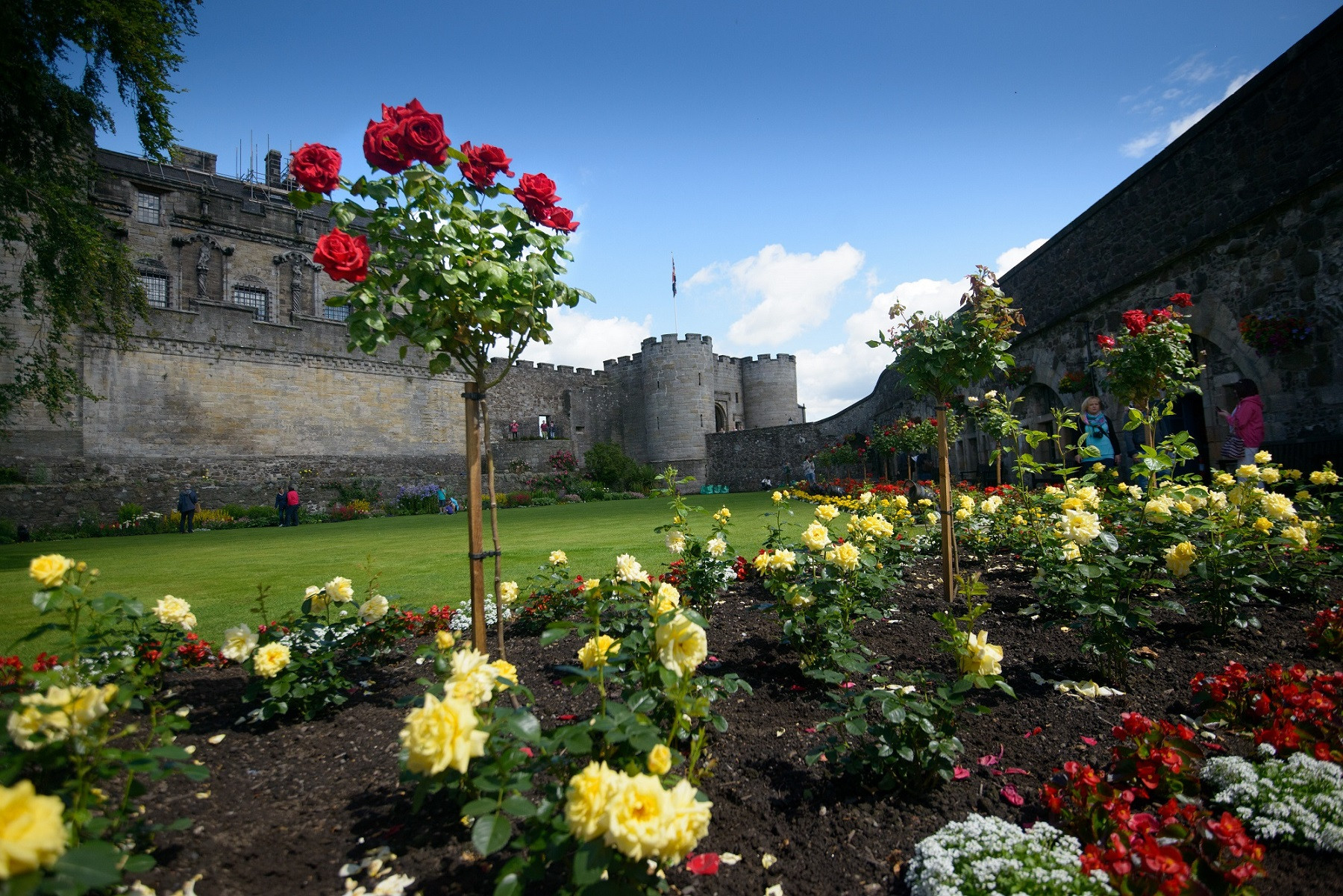 Queen Anne Gardens
Queen Anne Gardens
Contact SIXT.VN for seamless travel assistance.
- Address: 260 Cau Giay, Hanoi, Vietnam
- Hotline/Whatsapp: +84 986 244 358
- Website: SIXT.VN
21. What are The Palace Apartments at Stirling Castle?
The Palace Apartments at Stirling Castle vividly recreates the living quarters of 16th-century Scottish royalty, offering visitors a glimpse into the opulent lifestyle of James V and Mary Queen of Scots.
These apartments, richly decorated, provide insight into royal life. Costumed interpreters enhance the experience by sharing stories of the palace and its intrigues.
22. What are The Stirling Heads Gallery at Stirling Castle?
The Stirling Heads Gallery displays a collection of intricately carved oak medallions dating back to the 16th century, depicting images of kings, queens, nobles, and figures from mythology and the Bible.
These medallions, impressive in their detail, are significant art treasures. The gallery provides context to their historical and artistic value.
23. What are The Great Kitchens at Stirling Castle?
The Great Kitchens at Stirling Castle provide a fascinating look into the culinary operations required to feed the royal court and household, showcasing the preparation of elaborate feasts and daily bread.
Visitors can explore displays that illustrate food preparation techniques. Wax models add a realistic touch, depicting scenes of cooking and baking.
24. What is The Chapel Royal at Stirling Castle?
The Chapel Royal at Stirling Castle, constructed in just seven months by James VI for his son’s baptism, stands as one of Scotland’s earliest Protestant churches.
Dating back to 1593-4, it features elegant architecture. It holds significance as the last royal building erected at the castle.
25. What is The Great Hall at Stirling Castle?
The Great Hall at Stirling Castle, completed in 1503 for James IV, stands as Scotland’s largest medieval banqueting hall, marked by its grand scale and distinctive Royal Gold harling exterior.
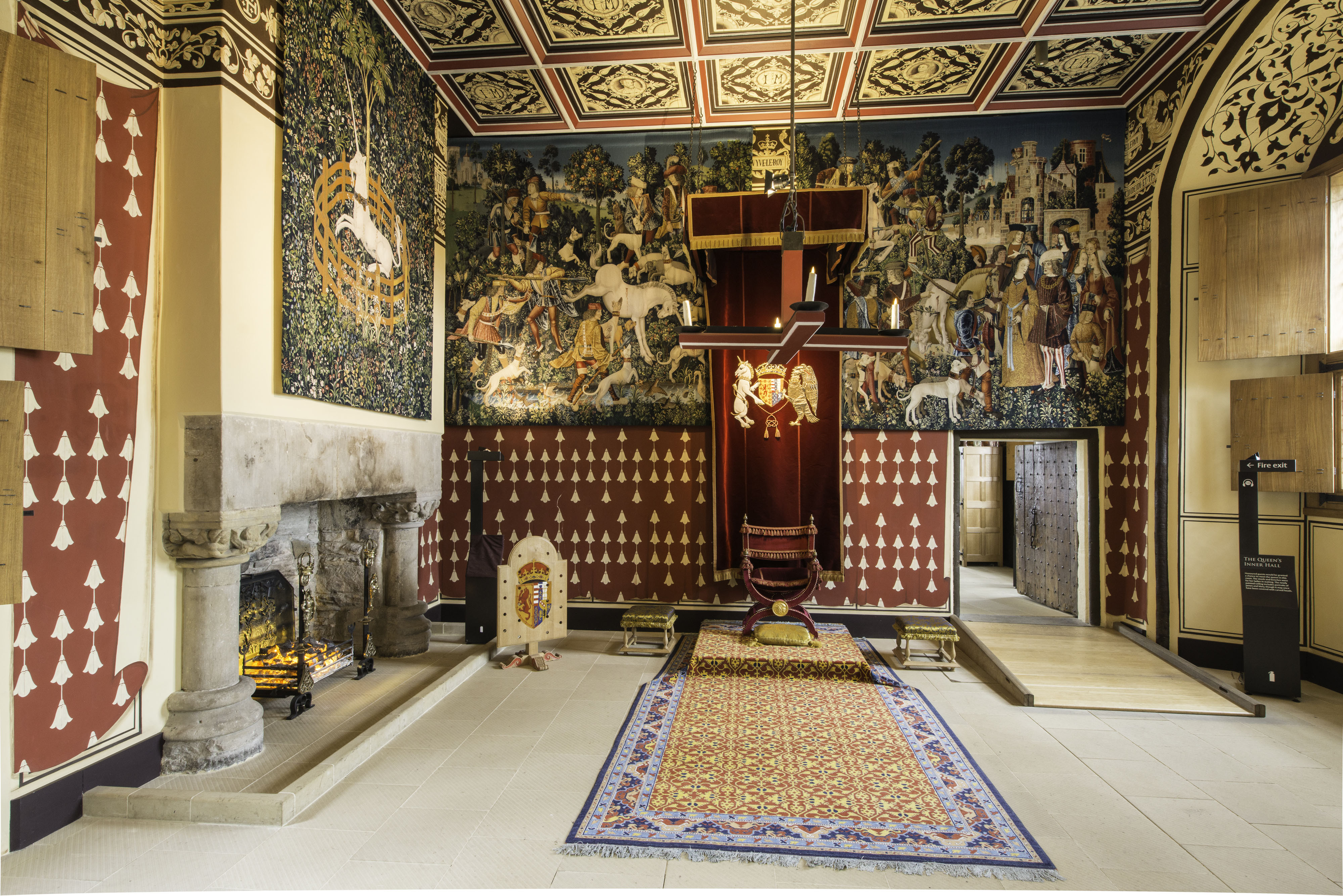 The Stirling Tapestries
The Stirling Tapestries
The hall, adorned with tall windows, showcases its historical importance. It serves as a testament to the power and prestige of the Scottish monarchy.
26. Is Stirling Castle wheelchair accessible?
Parts of Stirling Castle are wheelchair accessible. The castle strives to provide access to as many areas as possible. However, due to the historic nature of the site, some areas have limited accessibility.
It is recommended to check the official website or contact the visitor services for detailed information on accessible routes and facilities. This ensures a smooth and enjoyable visit for visitors with mobility needs.
27. Are dogs allowed at Stirling Castle?
Dogs are generally not allowed inside Stirling Castle, with the exception of assistance dogs.
This policy helps preserve the historical site and ensure the safety and comfort of all visitors. It is advisable to make alternative arrangements for pets before visiting.
28. What is the Argyll and Sutherland Highlanders Museum?
The Argyll and Sutherland Highlanders Museum, located within Stirling Castle, commemorates the history and legacy of one of Scotland’s renowned Highland regiments.
The museum exhibits military treasures, artifacts, and historical records. It brings to life the rich cultural links of the regiment over its 200 years of service.
29. What is the King’s Knot?
The King’s Knot, situated below Stirling Castle, is an ancient royal garden and earthwork that was once part of the castle’s extensive Royal Park.
It offers majestic views and provides insight into the historical landscape associated with the castle. Visitors can imagine the great battles and royal events that once took place in this area.
30. Are there guided tours of Stirling Castle?
Guided tours of Stirling Castle are available and included in the ticket price. These tours provide valuable insights into the castle’s history, architecture, and significance.
Tours typically run every half hour between 10am and 3pm, starting at the well outside the Fort Major’s House. Visitors can join these tours to enhance their understanding and appreciation of the castle.
With SIXT.VN, you’re well-prepared to navigate the reopening of Scotland for tourism. Stay informed, plan wisely, and get ready to experience the magic of Scotland. Contact us today to start planning your unforgettable Scottish adventure!
FAQ: Your Questions About Scotland’s Tourism Reopening Answered
1. When exactly will Scotland open for tourism without any restrictions?
While there’s no specific date, Scotland is gradually easing restrictions based on public health data. Monitor official announcements for the latest updates.
2. Do I need a vaccine to travel to Scotland?
Vaccination requirements may vary. Check the most recent travel guidelines from the Scottish government before your trip.
3. Are there any quarantine requirements upon arrival in Scotland?
Quarantine requirements depend on your country of origin and the current COVID-19 situation. Stay updated with official travel advisories.
4. What documents do I need to enter Scotland as a tourist?
You’ll typically need a valid passport and may need to provide proof of vaccination or a negative COVID-19 test. Check the specific requirements before traveling.
5. Are masks required in public places in Scotland?
Mask mandates may vary depending on the setting. Check the latest guidelines for information on mask requirements in public spaces.
6. What happens if I test positive for COVID-19 while in Scotland?
Follow the Scottish government’s guidelines, which may include self-isolation and seeking medical assistance.
7. Are tourist attractions open in Scotland?
Many attractions are open with safety measures in place. Check the specific attraction’s website for opening hours and booking information.
8. Is public transportation running in Scotland?
Yes, public transportation is operating, but it’s advisable to check for any disruptions or changes to schedules.
9. Can SIXT.VN help me book a hotel in Scotland?
Absolutely! SIXT.VN offers a wide selection of hotels in Scotland to suit your budget and preferences.
10. How can I stay updated on the latest travel information for Scotland?
Regularly check the official websites of the Scottish government and VisitScotland for the most up-to-date travel advice and restrictions.



